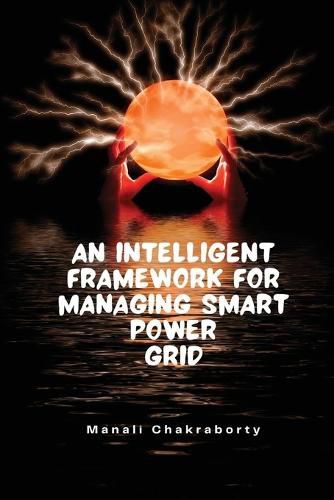Readings Newsletter
Become a Readings Member to make your shopping experience even easier.
Sign in or sign up for free!
You’re not far away from qualifying for FREE standard shipping within Australia
You’ve qualified for FREE standard shipping within Australia
The cart is loading…






This title is printed to order. This book may have been self-published. If so, we cannot guarantee the quality of the content. In the main most books will have gone through the editing process however some may not. We therefore suggest that you be aware of this before ordering this book. If in doubt check either the author or publisher’s details as we are unable to accept any returns unless they are faulty. Please contact us if you have any questions.
An Intelligent Framework for Smart Power Grid refers to a system that uses advanced technologies such as artificial intelligence, machine learning, and data analytics to optimize the operation and management of an electricity grid. It aims to improve efficiency, reliability, and sustainability of the power grid by monitoring, predicting and controlling the flow of electricity in real-time, reducing energy waste and preventing blackouts. This framework is expected to help create a smarter, more efficient and resilient power grid.
?Predictive maintenance: The framework uses predictive analytics to identify potential equipment failures before they occur, reducing downtime and maintenance costs. Grid optimization: By analyzing data from various sources, the framework can optimize the use of available resources, reducing energy waste and increasing the grid's overall efficiency. Real-time monitoring: The framework provides real-time monitoring of the grid's performance, enabling quick response to changes in demand and preventing blackouts. Demand response: The framework enables dynamic management of electricity demand, reducing peak demand and avoiding overloading the grid during high usage periods. Integration of renewable energy: The framework facilitates the integration of renewable energy sources into the grid, increasing the grid's sustainability and reducing dependence on fossil fuels.
$9.00 standard shipping within Australia
FREE standard shipping within Australia for orders over $100.00
Express & International shipping calculated at checkout
This title is printed to order. This book may have been self-published. If so, we cannot guarantee the quality of the content. In the main most books will have gone through the editing process however some may not. We therefore suggest that you be aware of this before ordering this book. If in doubt check either the author or publisher’s details as we are unable to accept any returns unless they are faulty. Please contact us if you have any questions.
An Intelligent Framework for Smart Power Grid refers to a system that uses advanced technologies such as artificial intelligence, machine learning, and data analytics to optimize the operation and management of an electricity grid. It aims to improve efficiency, reliability, and sustainability of the power grid by monitoring, predicting and controlling the flow of electricity in real-time, reducing energy waste and preventing blackouts. This framework is expected to help create a smarter, more efficient and resilient power grid.
?Predictive maintenance: The framework uses predictive analytics to identify potential equipment failures before they occur, reducing downtime and maintenance costs. Grid optimization: By analyzing data from various sources, the framework can optimize the use of available resources, reducing energy waste and increasing the grid's overall efficiency. Real-time monitoring: The framework provides real-time monitoring of the grid's performance, enabling quick response to changes in demand and preventing blackouts. Demand response: The framework enables dynamic management of electricity demand, reducing peak demand and avoiding overloading the grid during high usage periods. Integration of renewable energy: The framework facilitates the integration of renewable energy sources into the grid, increasing the grid's sustainability and reducing dependence on fossil fuels.